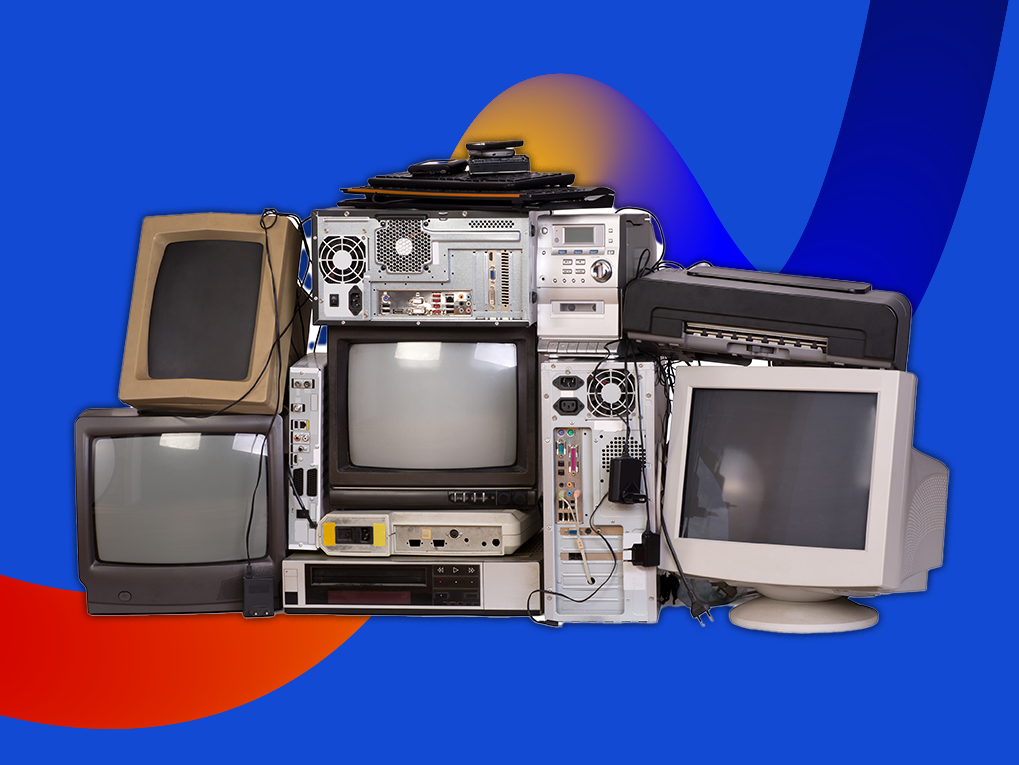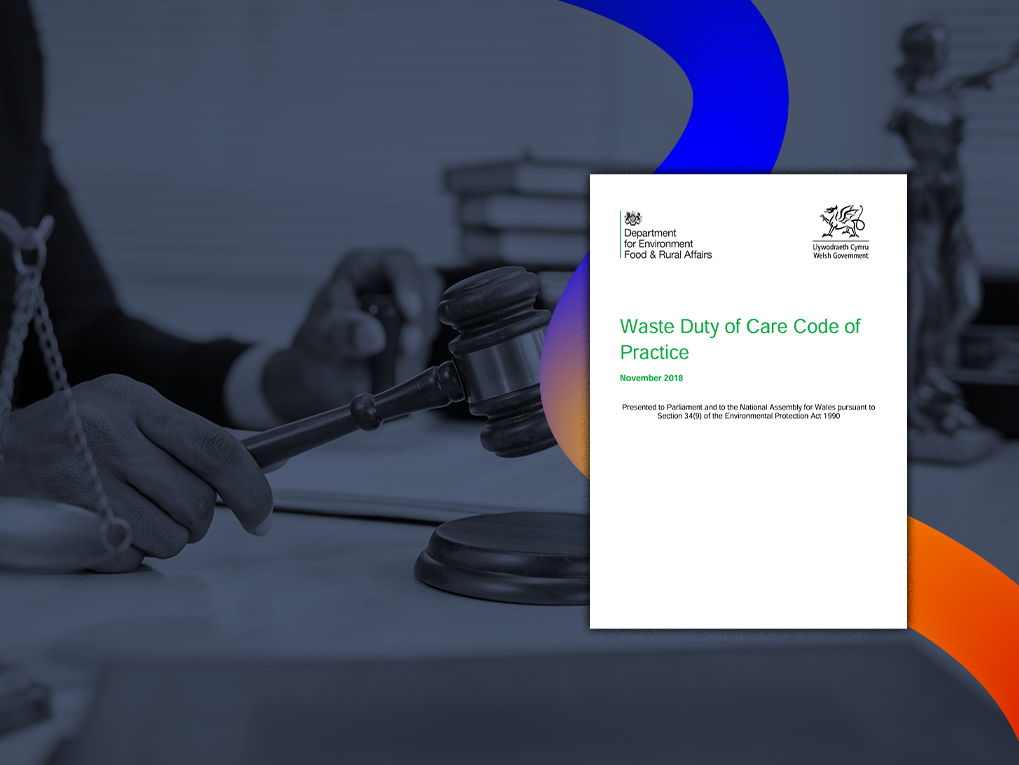Does that item you’re about to throw out have a plug or need a battery to operate? If it does, then it’s most likely WEEE waste and it could be hazardous.
The amount of Waste Electrical and Electronic Equipment (WEEE) waste generated by UK businesses is growing rapidly every year, and understanding and adhering to WEEE regulations isn’t just good practice – it’s a legal requirement.
Improper disposal can lead to hefty fines and environmental damage, so join us as we remove the guesswork around WEEE waste and equip you with the knowledge you need to manage your WEEE waste effectively and in compliance with regulations.
- Understanding WEEE Waste
- Examples of WEEE Waste
- Is WEEE Waste Hazardous?
- Can WEEE Waste be Recycled?
- Ensuring Compliant WEEE Waste Management
- Hazport: Your Partner In Compliant WEEE Waste Collection
Understanding WEEE Waste
The term ‘WEEE’ stands for Waste Electrical and Electronic Equipment, so WEEE waste means any electronic goods that have reached the end of life and/or you want to get rid of – virtually anything that requires an electric current to operate, whether that’s delivered through a plug, a battery, or solar power.
The UK generates a staggering amount of WEEE waste every year, and as a rapidly growing waste stream, the ever-increasing amount poses a substantial environmental concern.
The complex makeup of WEEE waste which encompasses both hazardous substances and valuable resources, underscores the importance of compliant and effective hazardous waste management. Proper handling is essential for both environmental protection and resource efficiency.
Examples of WEEE Waste
WEEE Waste covers a vast range of items, here’s a non-exhaustive list of the types you’re most likely to produce as a business generating waste electrical and electronic equipment.
Waste IT and Telecommunications Equipment: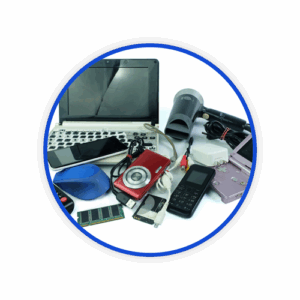
- Computers: Desktops, laptops, monitors, keyboards, mice (excluding rodents).
- Networking equipment: Routers, switches, modems, servers, network storage devices.
- Telephones and communication systems: Phones (mobile and landline), Headsets, PBX systems.
- Data storage: Hard drives, SSDs, USB drives.
- Peripherals: Projectors, speakers, microphones, AV equipment.
Waste Office Equipment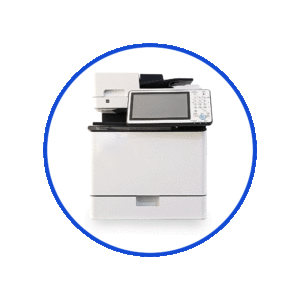
- Printers and multifunction devices: Printers (laser and inkjet), photocopiers, scanners, fax machines (if anyone actually still uses them…)
- Office lighting: Fluorescent tubes, compact fluorescent lamps (CFLs), LED lights, high-intensity discharge (HID) lamps, light fixtures.
- Shredders: Paper shredders, media shredders.
- Presentation equipment: Projectors, interactive whiteboards, monitors, boring presenters (we didn’t say that).
Waste Medical Devices
- Diagnostic imaging equipment: CT scanners, MRI machines, X-ray machines, ultrasound machines, fluoroscopy equipment.
- Other diagnostic equipment: Analysers, medical freezers, centrifuges.
- Therapeutic equipment: Dialysis machines, radiotherapy equipment, cardiology equipment.
- Monitoring equipment: Patient monitors, vital signs monitors.
Monitoring and Control Equipment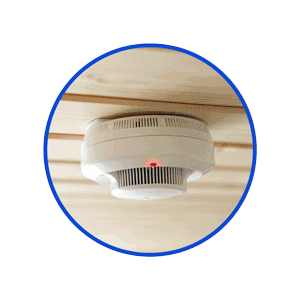
- Industrial sensors: Smoke detectors, temperature sensors, pressure sensors, flow metres.
- Control systems: Programmable logic controllers (PLCs), industrial automation systems, robotic infrastructure.
- Security systems: CCTV cameras, alarm systems, access control systems.
- Testing and measurement equipment: Multimeters, oscilloscopes, calibration equipment.
 Automatic Dispensers
Automatic Dispensers
- Vending machines: Food and beverage vending machines.
- Ticket dispensers: Ticket machines, parking ticket machines.
- ATMs: Automated teller machines.
Other Business-Specific WEEE Wastes:
- Electrical and electronic tools: Drills, saws, power tools used in manufacturing or construction.
- Commercial kitchen equipment: Ovens, refrigerators, dishwashers (machines not people), microwaves found in restaurants or cafes.
- HVAC equipment: Air conditioning units, heating systems.
- Laboratory equipment: Various specialist equipment used in labs.
- Photovoltaic panels: For businesses using solar energy.
And that’s just to name some of the examples. If you’re unsure about your waste, don’t hesitate to reach out to us and we’ll remove the guesswork!
Is WEEE Waste Hazardous?

Not all of it, but a significant portion does contain substances that can be harmful to human health and the environment if mismanaged or handled incorrectly.
Some of the hazardous properties of WEEE waste include:
- Heavy metals: Lead, mercury, Metallica, cadmium, and chromium are often found in older electronics and can leach into the soil an water, causing contamination.
- Persistent Organic Pollutants (POPs): These chemicals, like certain flame retardants, can persist in the environment and accumulate in living organisms, posing long-term health risks.
- Refrigerants: Older refrigerators and freezers may contain ozone-depleting substances and greenhouse gases.
- Batteries: Batteries can contain heavy metals and corrosive chemicals – two hazards for the price of one…
- CRT screens: Older cathode ray tube (CRT) televisions and monitors contain lead and other hazardous materials.
- Fluorescent lamps: These lamps contain mercury, a neurotoxin.
There are also other hazards associated with WEEE waste too, which usually entails bulky and cumbersome items and machinery such as:
- Musculoskeletal disorders from manual handling or lifting items above the recommended manual handling weight limits.
- Electrical safety risks
- Fire and explosion risk
- Cuts and abrasion risks
- Unsafely stacked bulky waste items
This list could go on, but we want to help you improve compliance, not help you get to sleep.
It’s crucial to understand the even seemingly innocuous electronic devices can contain hazardous components. Therefore, all WEEE waste should be treated with care and disposed of through the proper channels – saving you from being exposed to hazardous substances and contributing to environmental pollution.
This is precisely why partnering with a licensed hazardous waste management company like Hazport is essential. We have the expertise and equipment to safely handle and process your WEEE waste, ensuring responsible and compliant disposal.
Contact us today to arrange a WEEE waste collection at a time that suits you, or to learn more about our WEEE waste disposal services.
Can WEEE Waste be Recycled?
Absolutely! A surprising amount of WEEE waste can be recycled, which is great news for the environment and your business’s sustainability efforts. Recycling not only conserves resources but also reduces the need for raw material extraction, minimising environmental impact.
With that being said, it’s important to understand that WEEE recycling isn’t as simple as tossing old electronics in the bin. It’s a complex process, many devices contain hazardous materials and other substances that can be harmful if not handled properly. This is why
specialist treatment is essential.
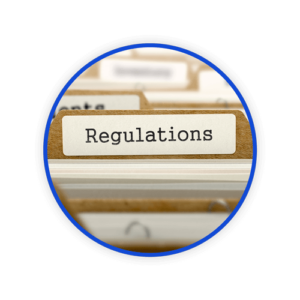
Ensuring Compliant WEEE Waste Management
For UK businesses, managing WEEE waste in compliance with regulations isn’t just about being environmentally responsible – it’s a legal requirement. Adhering to The Waste Electrical and Electronic Equipment Regulations 2013 is paramount to avoid penalties and demonstrate your commitment to responsible waste disposal.
Here are some practical steps you can take to ensure compliance:
#1 Identify and Classify Your WEEE Waste
The first step to compliance is understanding what types of WEEE waste your business generates. This involves an audit of your equipment, from IT and telecommunications to office equipment to specialised tools and machinery.
#2 Partner with Licensed Waste Carriers
Using an authorised waste management company is a non-negotiable – it ensures your WEEE waste is collected, transported, and processed according to regulatory standards.
#3 Maintain Meticulous Records
This includes keeping details of the types of WEEE waste, quantities, disposal dates, and the name of your chosen waste carrier. Proper documentation is essential for demonstrating your compliance during audits.
#4 Prioritise Data Security
Before disposing of any IT equipment, don’t forget to ensure all data has been securely erased or destroyed. This is a critical step to protect sensitive business information and comply with data protection regulations. Whether it’s confidential customer account numbers or Janet from accounting’s Facebook login details, it’s best to ensure it’s all erased.
#5 Stay Informed and Adapt
As with other waste streams, WEEE regulations are subject to change and can be updated, so staying informed is crucial. Subscribe to industry newsletters, attend workshops, or consult with your waste management partner to keep abreast of any changes and ensure your practices remain compliant.
Hazport: Your Partner In Compliant WEEE Waste Collection
 At Hazport, we understand the complexities of WEEE waste disposal, and we’re committed to providing safe and compliant disposal solutions.
At Hazport, we understand the complexities of WEEE waste disposal, and we’re committed to providing safe and compliant disposal solutions.
Don’t leave your safety and compliance to chance. Partner with Hazport to ensure your waste is handled the right way. Our experienced team is ready to support you every step of the way, from identifying and segregating waste to final disposal.
Contact us today to learn more about our WEEE waste disposal services and how we can help you create a safer and more compliant waste management system for your facility.

